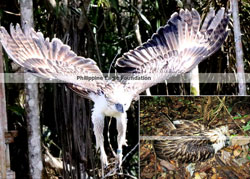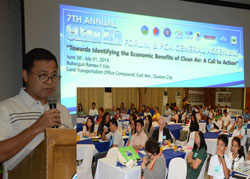Philippines to host Asia-Pacific Forestry Week 2016

More than 1 000 government and forestry and natural resources officials, and representatives of international and non-government organizations and forest industries from over 30 countries are expected to gather at the Clark Freeport Zone in Pampanga from 22 to 26 February for Asia-Pacific Forestry Week 2016.
Spearheaded by the Food and Agriculture Organization of the United Nations (FAO) and the Asia-Pacific Forestry Commission (APFC) in partnership with the Philippines Department of Environment and Natural Resources (DENR), Forestry Week 2016 will be among the largest and most important forestry events in the region this year. It will run in conjunction with the 26th session of the Asia-Pacific Forestry Commission – one of six such regional assemblies supported by FAO – which convenes every two years to review progress in forestry development, discuss common issues and set new agendas for addressing natural resource management challenges in the region.
“The selection of the Philippines as host country for this year’s Asia-Pacific Forestry Week is very timely. We have much to share with our colleagues from our experience in implementing the first phase of the National Greening Program, through which we were able to reforest more than 1.3 million hectares from 2011-2015,” DENR Secretary Ramon J. P. Paje said.
“At the same time,” he added, “we also look forward to learning from other countries and international experts on how to improve the roll out of the expanded NGP and hit our 2028 target of reforesting an additional 7 million hectares of unproductive, denuded and degraded forestlands.”
According to FAO’s 2015 Global Forest Resources Assessment, the Philippines ranked fifth among 234 countries and territories for the greatest reported annual forest area gain, with an increase of 240 000 hectares per year between 2010 and 2015.
Growing our future!
Held only once every four years, the 2016 Forestry Week will focus on “growing our future” through effective integration of forestry with the other facets of sustainable development.
Patrick Durst, FAO’s Senior Forestry Officer for Asia and the Pacific, explains that, “Gone are the days forestry can be viewed as primarily an extractive sector. More than ever, forest managers and policy makers need to recognize and integrate the full range of benefits that forests generate, including contributions in enhancing food security and eliminating poverty, conserving biodiversity, mitigating climate change and strengthening resiliency to natural calamities.“
More than 70 workshops, seminars and side events will take place during Asia-Pacific Forestry Week 2016 and will serve as a springboard for inclusive dialogue on the implementation of commitments made under the Paris Agreement on climate change, future trade and market access arrangements, meeting the evolving needs and expectations of society with respect to forests, emerging institutional and governance issues and green investments.
“FAO is taking significant steps to support nations in sustainably managing the region’s forests while ensuring that long-term social, economic and environmental objectives are met,” said FAO Representative in the Philippines José Luis Fernández. “In the Philippines, we are working in close partnership with DENR’s Forest Management Bureau in the implementation of three projects that will facilitate the adoption of Forest and Landscape Restoration principles as well as the development of a National Forest Monitoring System Action Plan.”
For more information on the Asia-Pacific Forestry Week and the 26th session of the Asia Pacific Forestry Commission, please visit http://www.fao.org/about/meetings/asia-pacific-forestry-week/en/
- Details
- Parent Category: News & Events
- Category: Press Releases




 The Philippines is playing host to a regional meeting tackling best mining practices in East and Southeast Asian regions.
The Philippines is playing host to a regional meeting tackling best mining practices in East and Southeast Asian regions.

